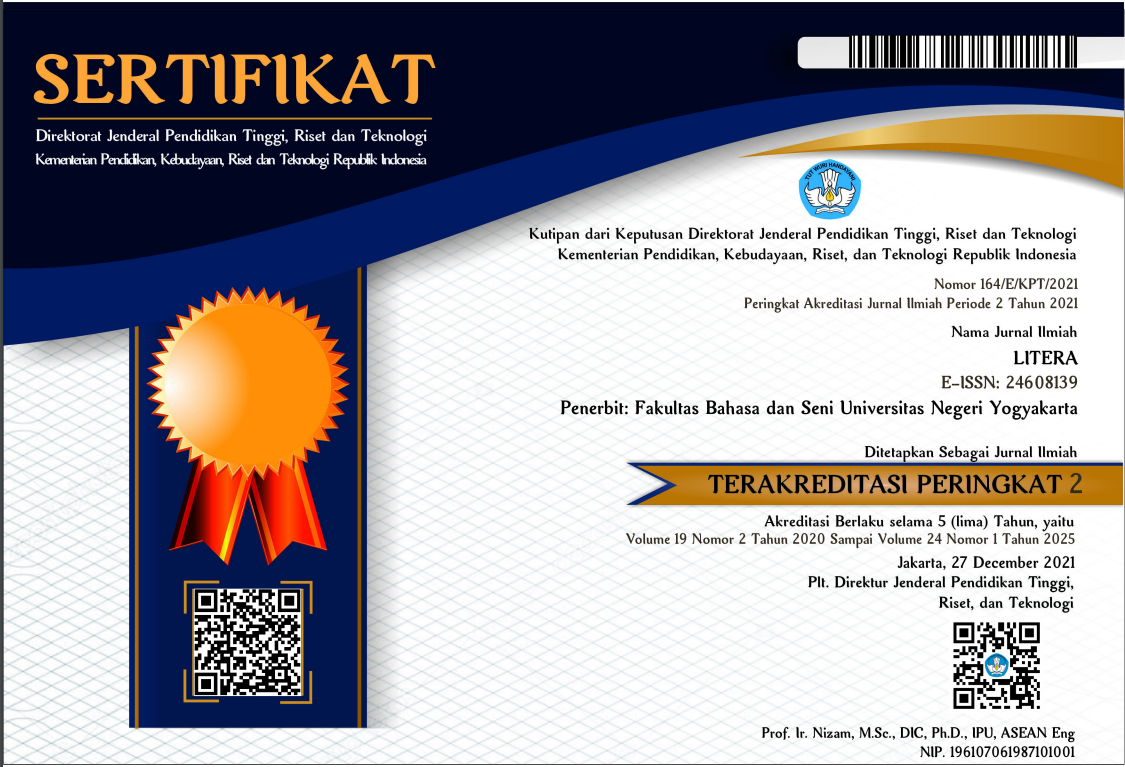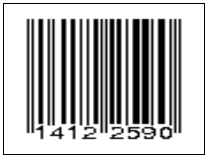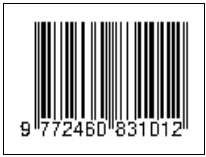Backtracking Indo-European languages influence on Indonesian
Downloads
Indo-European languages are the focus of this study which emphasized the influence of those languages on the Indonesian lexicon and linguistic diversity. In order to reach the goal of this work, diachronic and synchronic analysis were employed. Diachronic analysis referred to the theory of loanword form reconstruction stated by Mallory & Adams (2006) and borrowing process theory by Campbell (1998), while the synchronic analysis included loan type identification mentioned by Swe (2013). Consequently, the existence of Petjuk or Petjoh was identified as the diffusion of Dutch and Indonesian. There are also Portuguese family names which spread widely especially in East Indonesia and loanwords found. These loanwords are derived from mostly Germanic, while Indo-Iranian, Italic and Hellenic contributed also. Germanic languages, e.g. Dutch, German and English, and Portuguese as part of Italic supplied more loanwords for their long-lasting existence throughout the archipelago in the past during their colonization, while Indo-Iranian such as Sanskrit, Pali, Persian and Hindi gave their influence for coming into contact with Indonesians through trading activity. The only one Hellenic, e.g. Greek, and other Italic which are Latin and French became the donor through luxury loan for the need Indonesians acquire to translate some new terms which couldn’t be accommodated by Indonesian itself.
Downloads
Campbell, L. (1998). Historical linguistics: An introduction. Edinburgh University Press
Cress, R. (1998). Petjoh woorden en wetenswaardigheden uit het Indische verleden. Prometheus
Crowley, T. & Bowern, C. (2010). An introduction historical linguistics (4th edition). Oxford University Press
Fernandez, I. Y. (1998). Melayu Nagi, Wure, dan Konga di Flores Timur: Prototipe Isolek Melayu di kawasan Indonesia Timur Indonesia (Kajian historis komparatif dan dialektologi), A report of recent fieldwork
Fernandez, I. Y. (2014). Melayu Larantuka di Flores Timur: Sebuah tinjauan dari perspektif sejarah, A report of recent fieldwork
Fortson, B.W. (2004). Indo-European language and culture: An introduction (illustrated ed.). Blackwell Publishing
Hidayat, A. A. & Rahman, M. T. (Eds). (2022). Sejarah sosial Muslim minoritas di kawasan Asia. Prodi P2 Studi Agama-Agama UIN Sunan Gunung Djati Bandung
Holmes, J. (1992). An introduction to sociolinguistics. Longman
Mallory, J. P. & Adams, Q. D. 2006. The Oxford introduction to Proto-Indo-European and the proto-Indo-European world. Oxford University Press
Paasman, B. (Eds). (1994). Tjalie Robinson, de stem van Indisch Nederlands. Stichting Tong-Tong
Purwitasari, A. in press. Word geography of word origin in Petjoh [Manuscript submitted for publishing]. Sara Book Publication
Seemann, H. (2000). Indonesien in der deutschen Geisteswelt: Von Goethe bis Emil Nolde (3rd ed.). Katalis
Swe, T. (2013). “A study of English loanwords for science and technology in the Myanmar language”. Dagon University Research Journal, 5, 5-13
Van der Sijs, N. (2010). Nederlandse woorden wereldwijd. Sdu Uitgevers
Varma, P. K. (2010). Becoming Indian: The unfinished revolution of culture and identity. Allen Lane Penguin Books
Copyright (c) 2025 Ana Purwitasari

This work is licensed under a Creative Commons Attribution-ShareAlike 4.0 International License.

This work is licensed under a Creative Commons Attribution-ShareAlike 4.0 International License.























